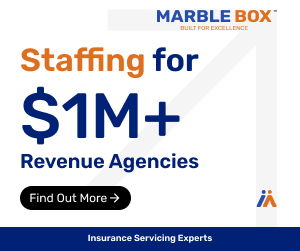
Things get busy in insurance agencies. It is very easy to get caught up in incoming work and forget to manage existing submissions. When important things get forgotten, bad things can happen, as one agency found out several years ago.
In late summer 2005, a California couple refinanced the mortgage on their home. The mortgage broker arranged for a title insurance company to open an escrow for the transaction. The mortgage lender required the couple to obtain a new homeowners insurance policy, so the broker contacted an insurance agency and requested it. The agency issued an Evidence of Property Insurance form to bind coverage with an insurance company with whom it often placed business. It had bound coverage with that company this way dozens of times before.
The agency sent the EOI to the mortgage broker and mailed an application to the couple. According to court testimony, the couple did not receive the application or a premium invoice. At the same time, the mortgage broker sent a copy of the EOI to the escrow officer. However, the EOI did not show a due date for the premium, and the escrow officer was not informed that payment was due within 15 days. Consequently, escrow did not cut a check for the payment.
When payment did not arrive, the agent marked the EOI as void and sent copies to the mortgage broker and escrow. The borrowers themselves never received a notice that their policy was being cancelled, and the mortgage broker testified that she did not receive the voided EOI.
Two weeks later, the house burned down, killing the husband. The widow called the agency to make an insurance claim for the loss of the house. One of the producers with the agency told her he did not think coverage was in force, but he promised to look into it and call her back. However, he did not call her back, nor did he return her follow-up calls. Subsequently, the insurer denied coverage for the loss.
The widow filed a lawsuit against the escrow company for failing to make the premium payment. In an out-of-court settlement, the company paid her and the mortgage lender $270,200, in return for which she assigned her rights of recovery to them.
The escrow company sued the insurance carrier, the agent and others to recover its payment. The insurance carrier argued that it owed no coverage because the EOI was not a binder. The carrier said the agency was not one of its appointed agents; the agency placed coverage through the services of the carrier’s managing general agent.
The trial court disagreed and awarded $480,000 to the escrow company. The carrier then moved for, among other things, recovery from the agent under an indemnification agreement, but the court denied all its motions. The carrier appealed.
The appellate court ruled that the EOI was in fact a binder, noting that it included all the elements of a binder required by California law. In response to the carrier’s arguments about whether the EOI was a temporary insurance contract, the court pointed out that the carrier had in other cases permitted the agency to bind coverage without signed applications. Also, despite the fact that the carrier had not appointed the agency, the court found that the facts support the premise that an agency relationship existed between the two. Because the carrier had permitted the agency to bind coverage before, the court said that it had given the agency ostensible authority. Lastly, because the trial court ruled that the carrier acted in bad faith, the appellate court held that the carrier could not order the agency to indemnify it.
Several things were done wrong in this story. The agency failed to follow up on the insurance application and the expected premium payment. It survived the court challenge, not because of its contract with the carrier, but because of a pattern of past practice. It relied on an EOI, rather than a form with the word “binder” in its title. It acted outside its written authority. All of these acts put the agency in jeopardy of legal liability to the insured and the carrier.
These mistakes cost the agency close to a half million dollars, though it’s likely their E&O carrier covered this. Even if their E&O carrier covered this, dealing with this case can be draining and take away productive time from the agency. This is also likely to effect their E&O rates for years to come. Agencies that want to avoid this fate should carefully adhere to the boundaries of their written authorities, use appropriate forms, follow up promptly on applications and invoices, and communicate regularly with all involved. These are the best ways to stay out of a courtroom.
Source: 188 Cal.App.4th 401 (2010), 115 Cal. Rptr. 3d 707. CHICAGO TITLE INSURANCE COMPANY, Plaintiff and Respondent,v. AMZ INSURANCE SERVICES, INC., Defendant, Cross-defendant and Respondent;PACIFIC SPECIALTY INSURANCE COMPANY et al., Defendants, Cross-complainants and Appellants.
This article is sponsored by












